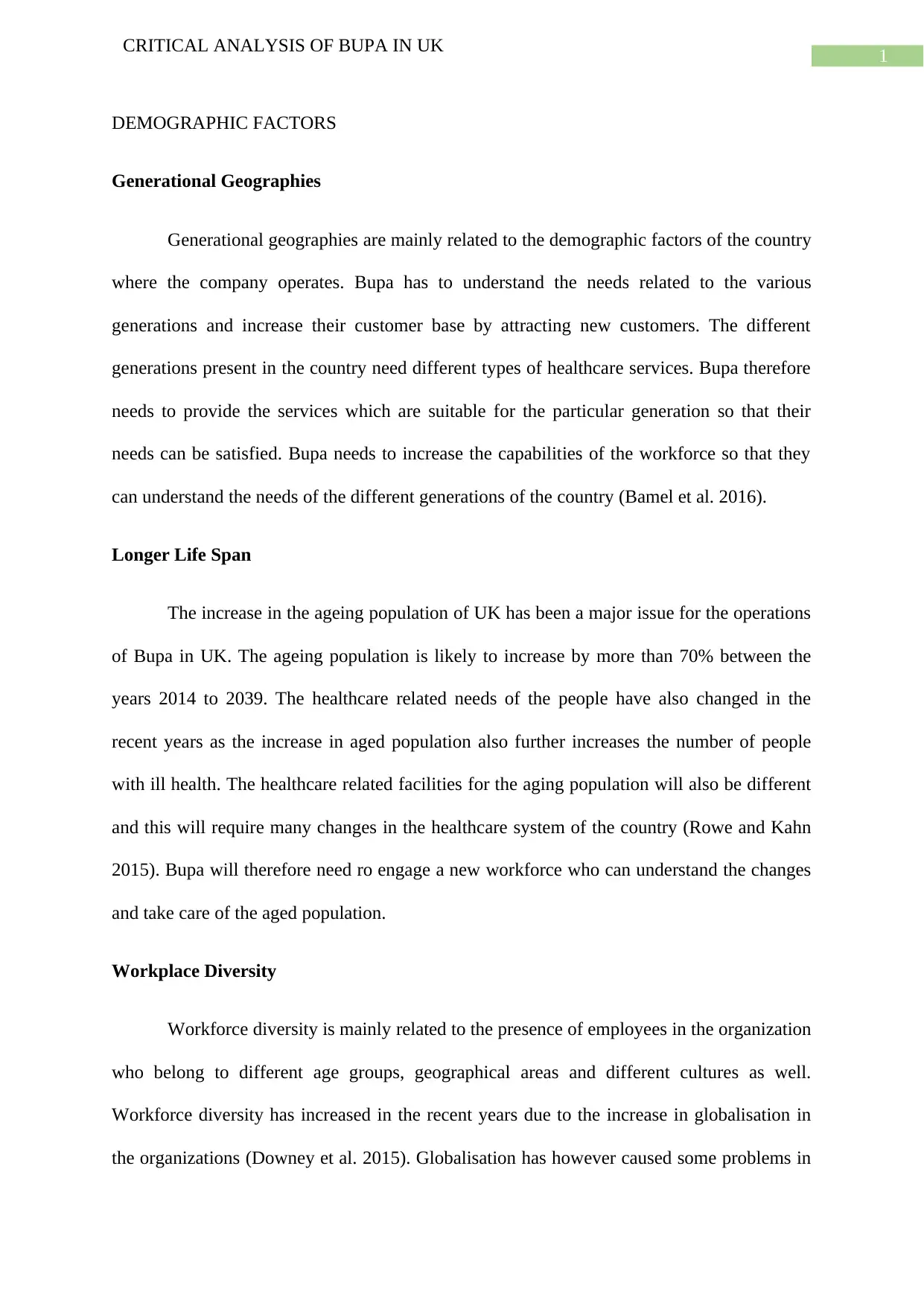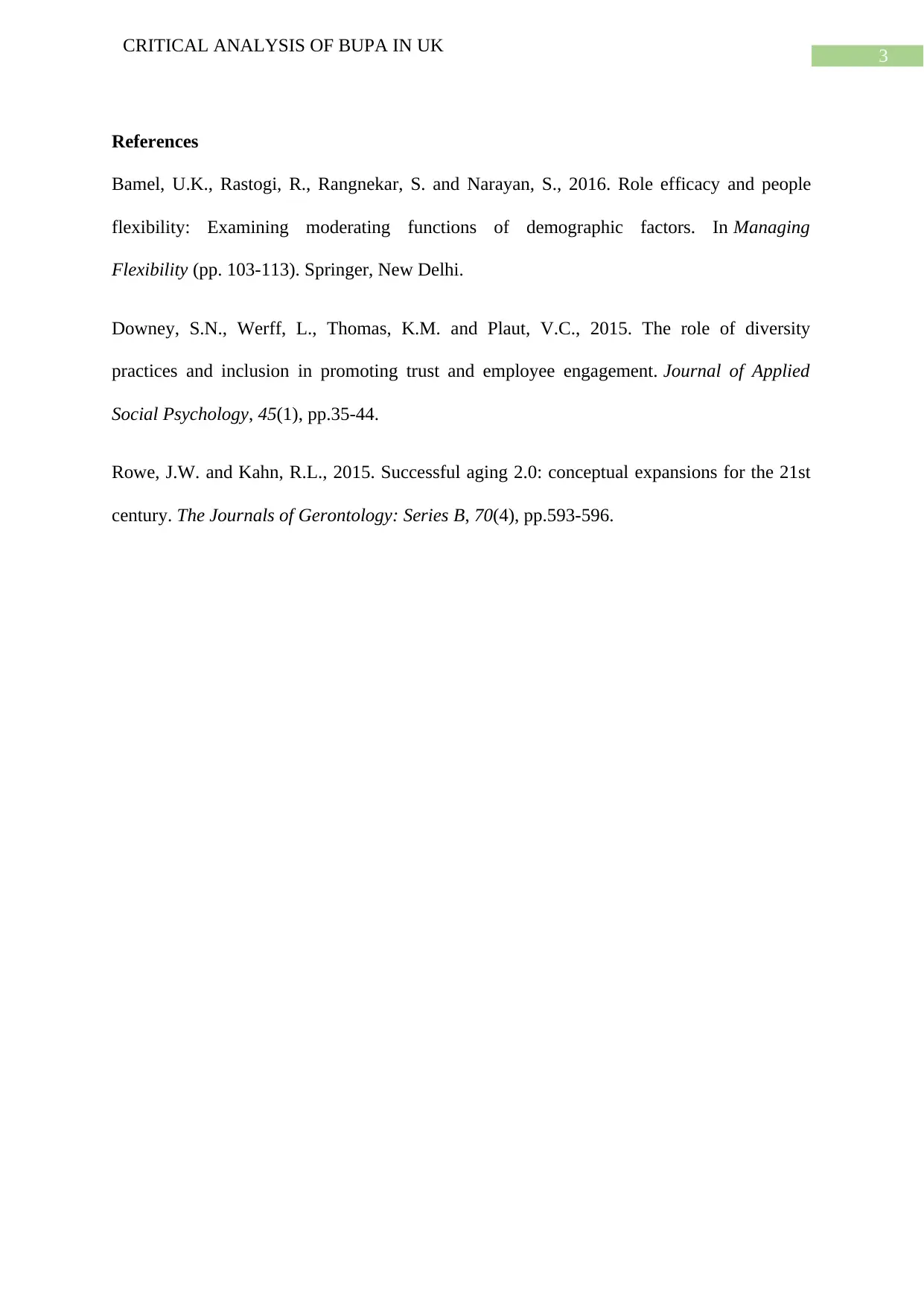Critical Analysis of BUPA in the UK: Demographic Factors Report
VerifiedAdded on 2021/04/20
|4
|543
|78
Report
AI Summary
This report provides a critical analysis of BUPA in the UK, focusing on the demographic factors impacting its operations. It examines generational geographies, highlighting the need for BUPA to understand and cater to the diverse healthcare needs of different age groups. The report also addresses the challenges and opportunities presented by the increasing ageing population in the UK, including the need for specialized healthcare facilities and a workforce capable of addressing the specific needs of this demographic. Furthermore, the report explores the significance of workforce diversity in BUPA, emphasizing the importance of training and creating a suitable working environment for a diverse group of employees to effectively serve the healthcare needs of the UK population. The analysis draws on relevant academic sources to support its findings.
1 out of 4










![[object Object]](/_next/static/media/star-bottom.7253800d.svg)